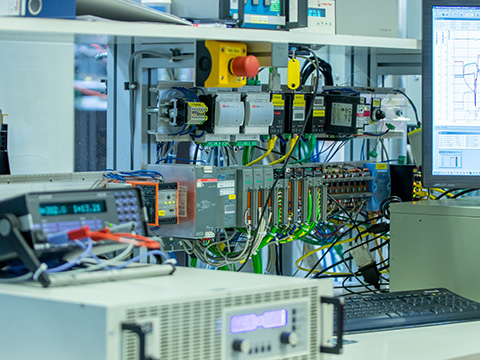
Posted to News on 23rd Jun 2025, 12:00
From lab precision to production resilience
When a Formula One car takes a corner at 150 miles per hour or a jet engine powers up mid-flight, there is no room for error. Every component, every system has already been pushed to its limits in controlled conditions long before it sees real-world action. Here, Beth Ragdale, software business manager at automation specialist Beckhoff UK, explains why building the tools to run those tests and scaling them for production is a challenge that machine builders are quietly wresting with.

(See Beckhoff at MachineBuilding.Live, 15 October 2025, on stand 214)
Test benches have long played a critical role in research and development. In highly controlled lab environments, engineers can measure performance with extraordinary precision. They can simulate stresses, observe failures and capture data with forensic detail. However, the transition from lab to production is rarely straightforward. The requirements of real-world manufacturing - cost, durability, speed and flexibility - demand a different approach to testing. Increasingly, businesses need systems that can bridge both worlds.
This is especially true in sectors where quality and safety are non-negotiable. Aerospace manufacturers, for instance, are often required to store performance data for a decade or more. Automotive OEMs need to verify critical systems like suspension or braking, not just once but continuously, across thousands of units. Pharmaceutical companies must validate devices under strict regulatory conditions, with traceable, repeatable results. In each case, the testing solution must start as a precise tool for experimentation and evolve into something robust enough for the factory floor.
What's emerging is a shift in mindset - from thinking of test benches as bespoke lab rigs to viewing them as integrated test systems that can be adapted, replicated and scaled. This is changing how machine builders approach design. Rather than building entirely new setups for each test scenario, there's a move towards modular, reconfigurable architectures that can be tailored to the task, whether it's analysing torque in a robotic arm or checking the pressure tolerance of a safety valve.
Data driven
Data is at the heart of this shift. Capturing accurate, high-frequency data allows teams to spot anomalies, understand failure points and refine products before they reach market. However, in production environments, data acquisition faces new hurdles like electrical noise, temperature fluctuations or physical vibration. The test system has to be able to withstand all of this and still deliver clean, usable data.
One of the more significant developments in recent years has been the ability to record data at very high sampling rates - tens of thousands of data points per second - and do so reliably on the factory floor. In high-speed or high-risk applications, where a single missed signal could mean a costly failure, this can make a measurable difference to reliability.
Another important consideration is how scalable a testing solution is. A setup that works for one prototype may not be viable for high-volume production. Flexibility is key. Machine builders are increasingly looking for systems that can be easily expanded or adapted without the need to start from scratch. For example, being able to add extra inputs or change how data is logged, without ripping out and replacing entire systems, can make testing more responsive to shifting needs.
There's also a growing awareness that the value of a test system extends beyond the testing itself. Once validated, the same configuration can often be packaged and sold as a standalone product. We've seen examples in industries from automotive to medical devices where a test setup built for internal use has become a marketable solution. What begins as a custom bench in R&D ends up as a repeatable, sellable machine - industrialised and ready for deployment.
This evolution is shaping how engineers think about testing, not just as a stage in development but as a strategic capability. By investing in systems that are both precise and production-ready, businesses can accelerate the path from prototype to product.
As the boundary between lab and line continues to blur, the tools and thinking around testing are adapting. The challenge now is not just how to test thoroughly, but how to do it smarter, faster and in the environments where it counts.
Beckhoff's test benches can offer sampling speeds of up to 50,000 samples per second.
Want the latest machine building news straight to your inbox? Become a MachineBuilding member for free today >>















